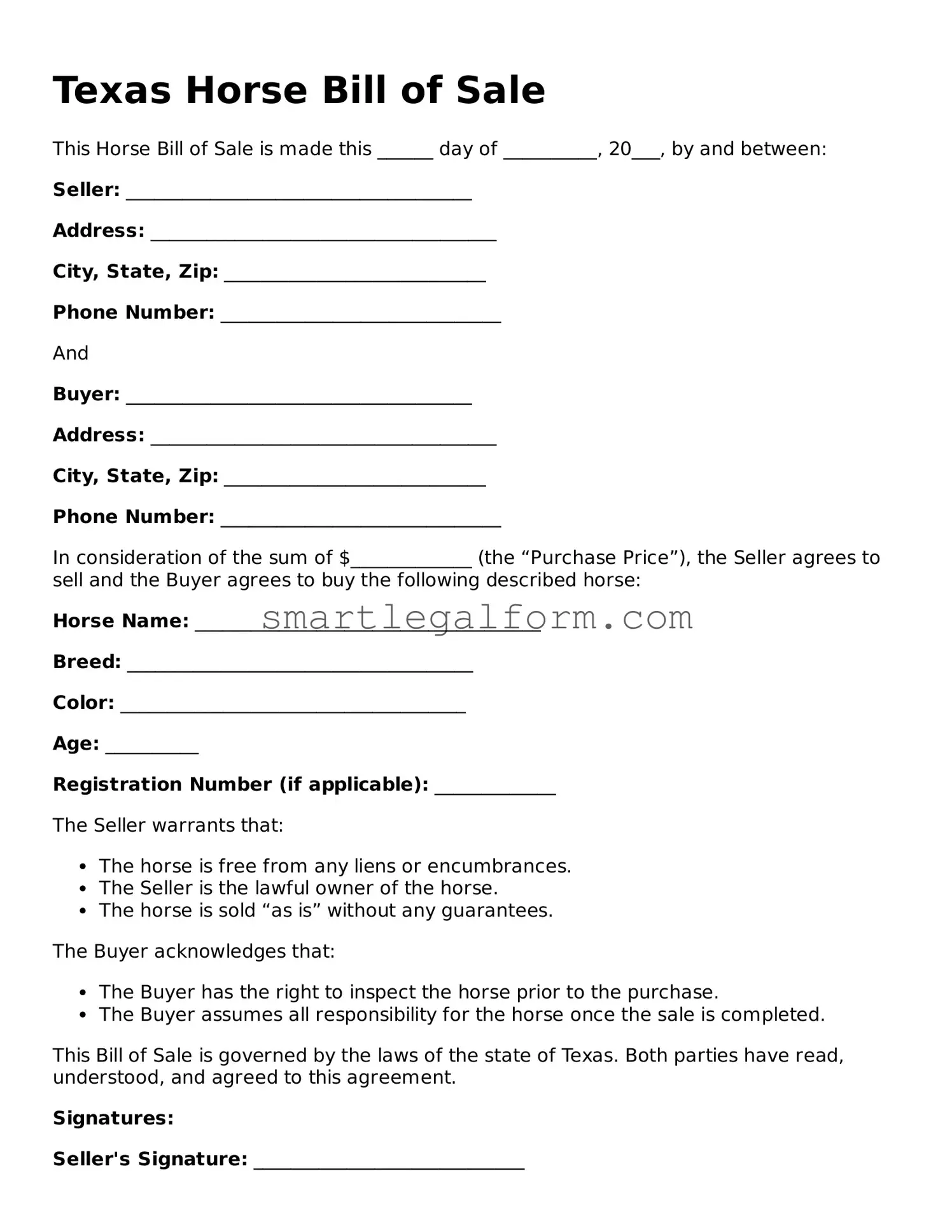Texas Horse Bill of Sale
This Horse Bill of Sale is made this ______ day of __________, 20___, by and between:
Seller: _____________________________________
Address: _____________________________________
City, State, Zip: ____________________________
Phone Number: ______________________________
And
Buyer: _____________________________________
Address: _____________________________________
City, State, Zip: ____________________________
Phone Number: ______________________________
In consideration of the sum of $_____________ (the “Purchase Price”), the Seller agrees to sell and the Buyer agrees to buy the following described horse:
Horse Name: _____________________________________
Breed: _____________________________________
Color: _____________________________________
Age: __________
Registration Number (if applicable): _____________
The Seller warrants that:
- The horse is free from any liens or encumbrances.
- The Seller is the lawful owner of the horse.
- The horse is sold “as is” without any guarantees.
The Buyer acknowledges that:
- The Buyer has the right to inspect the horse prior to the purchase.
- The Buyer assumes all responsibility for the horse once the sale is completed.
This Bill of Sale is governed by the laws of the state of Texas. Both parties have read, understood, and agreed to this agreement.
Signatures:
Seller's Signature: _____________________________
Date: _____________________________________
Buyer's Signature: _____________________________
Date: _____________________________________
